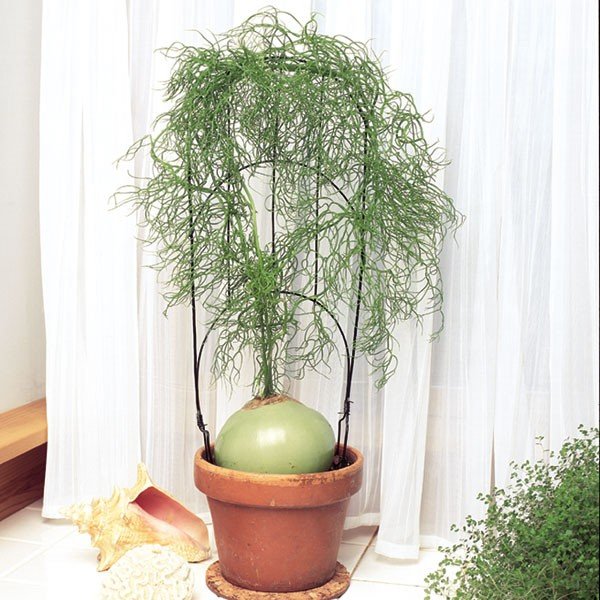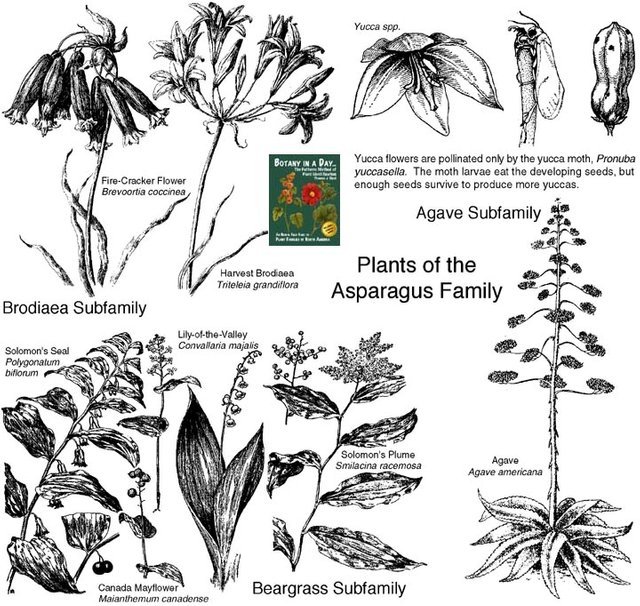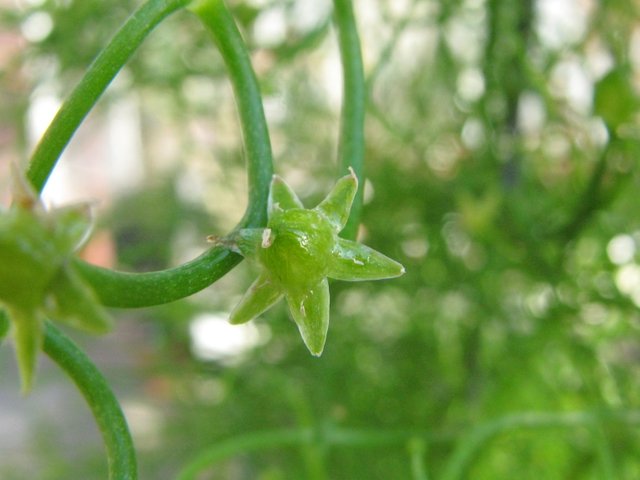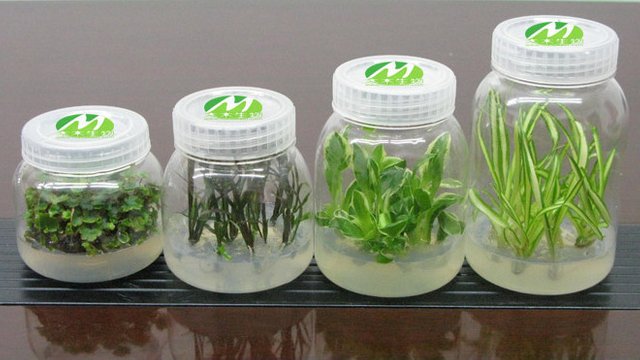
Image Source: Logee's Greenhouse
A very interesting plant has begun to surface. It is both a great ornamental plant, and potentially a medically significant finding. The climbing onion (Bowiea volubilis) has been used by the native population in the southern areas of Africa for years now.
What exactly is it?
Bowiea volubilis is a perennial bulb in the Asparagaceae family. As the common name suggests, the bulb portion of the plant closely resembles that of an onion. As with bulbs, this may or may not be buried, but in collections it is often on top of the soil. A vine like growth will grow for a period from this bulb. A short interval of time the plant will spend somewhat dormant, and the vine will die back to the bulb. The curious part is that there are no true leaves, but instead parts of the plant called cladophylls. This leaves the plant vine-like, but not a true vine.

Image Source: The Asparagus Family
What do we need it for?
Hobby
Globally, this plant is used ornamentally. It is added into many succulent collections, and especially by anyone who collects weird plants. It has easy care, and does not need a lot of space. While it may sound strange, it also has interesting actions to observe. The vine grows very fast, and will climb up anything close to it. The bulb itself may produce daughter bulbs. In the case of a large plant, the bulb may split in half to create two separate plants. If given enough time, this plant will reward.
Medical
Perhaps the main usage it is known for though is medical. It is believed to help with anything from headaches to infertility. Some of this because it might have anti-inflammatory potential. When eaten raw, the plant is poisonous. So the possibility for medical significance is there. Sadly, this means that the wild plants are being removed faster than they can reproduce. Partnered with the fact that this plant primarily reproduces by creating daughter bulbs, the climbing onion needs a little help.
This has started two major studies for the plant. Many scientists are beginning to wonder if the plant truly has any of these medical properties that it is believed to have. With these tests, there have been indicators that it may have potential. There still needs to be more research for conclusive results.

Image Source: The Flower
Propagation
On another side, the plant needs protection. Providing a steady supply would be a positive regardless. The plant naturally produces daughter bulbs, but at a very slow pace. It also flowers, but hardly ever produces seeds in an artificial environment. Another option is to take a thick layer from the bulb to plant. A few new bulbs may grow from this. Most of these options result in duplicates of the original bulb.
Large scale answers are coming from tissue culturing individual bulbs. One bulb can be used to create hundreds. A flask filled with nutrient enriched agar is used to essentially clone the plant. Small pieces of tissue are placed on the agar. After incubating for some interval of time, new plants will slowly grow from the tissue. Regardless of the method used, many of the existing plants are similar.

Image Source: Tissue Cultures
Even if this plant does not have any significant use, it will always be a great addition to any plant collection or windowsill.
There is no leaf on this tree, Lata is very much liked
Downvoting a post can decrease pending rewards and make it less visible. Common reasons:
Submit
Woww,
Amazing, good plant 👍👍 @cfreidsma
Downvoting a post can decrease pending rewards and make it less visible. Common reasons:
Submit